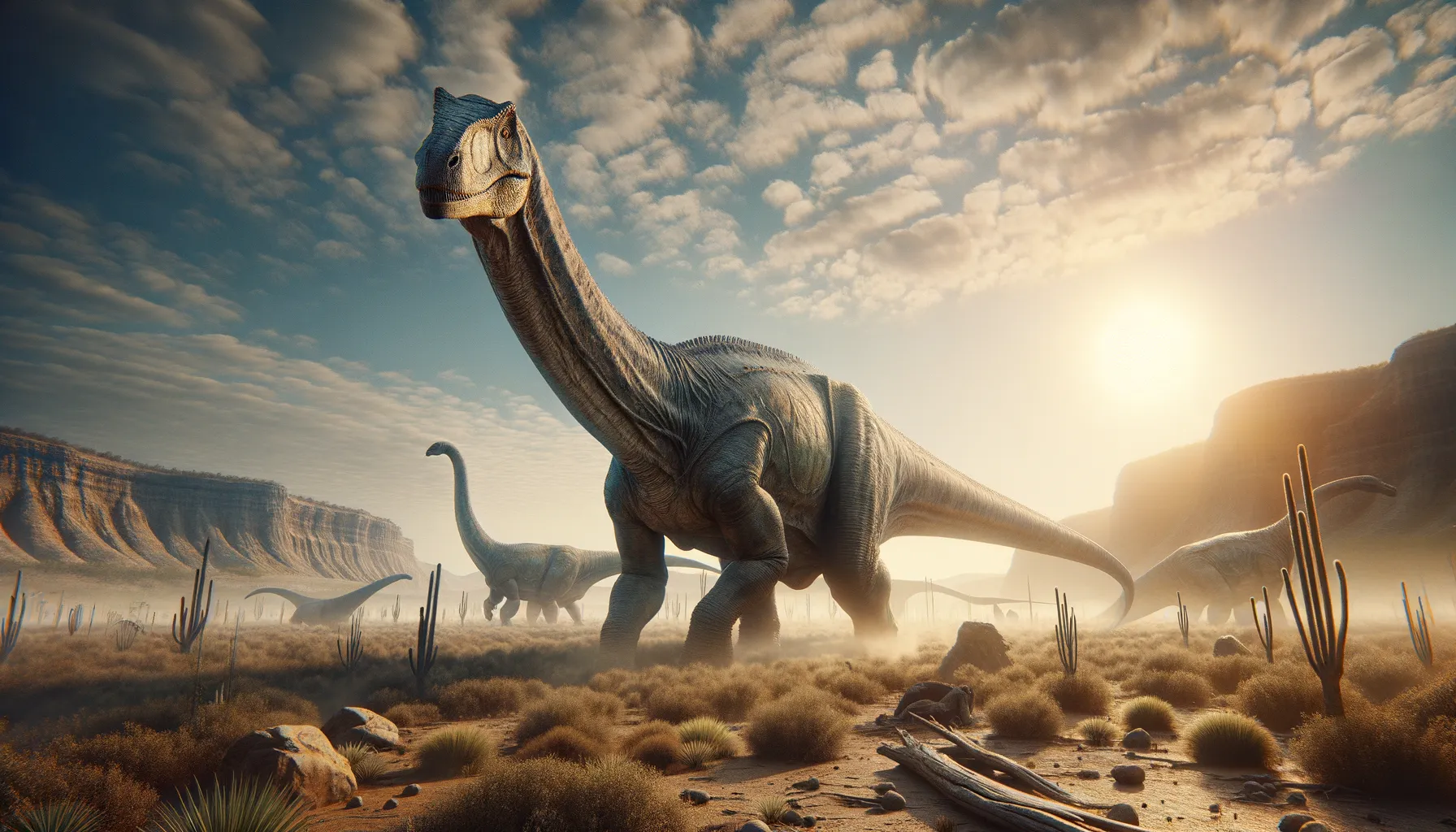
Baotianmansaurus
A giant of the ancient plant-eaters.
Period
Cretaceous
Length
Could reach lengths of over 50 feet.
Height
Estimated to be up to 20 feet tall.
Weight
Estimated to weigh several tons.
Baotianmansaurus was a large, plant-eating dinosaur that lived during the Cretaceous period, known for its enormous size. It belonged to the sauropod family, characterized by long necks and tails and massive bodies. Its fossils were discovered in what is now central China, shedding light on the diverse ecosystems of the time.
Diet
Baotianmansaurus was a herbivore, likely feeding on a variety of vegetation. It used its long neck to reach leaves and branches from tall trees.
Hunting
As a herbivore, Baotianmansaurus did not hunt other animals. It grazed peacefully among the flora of its ecosystem.
Environmental challenges
Baotianmansaurus faced predation from large carnivorous dinosaurs that shared its habitat. It also dealt with fluctuations in food supply, especially during dry seasons when vegetation was scarce. The dinosaur had to navigate these challenges while competing for resources with other large herbivores.
Speed
Baotianmansaurus likely moved slowly.
Lifespan
Its lifespan was possibly several decades.
First discovery
First discovered in central China in 2009.
Fun Facts
- Baotianmansaurus was a long-necked dinosaur that lived during the Late Cretaceous period.
- It was a type of sauropod, known for its massive size and herbivorous diet.
- This dinosaur was named after the Baotianman National Nature Reserve in China where its fossils were discovered.
- Baotianmansaurus is believed to have roamed the Earth around 70 million years ago.
- While it might not be as famous as some of its sauropod relatives, it's an important puzzle piece in understanding dinosaur diversity in Asia.
- The fossils of Baotianmansaurus were first found in the Henan Province of central China.
- Scientists are still learning about this dinosaur, so new discoveries could change what we know about it.
Growth and Development
Baotianmansaurus hatched from eggs and grew rapidly during its early years to avoid predation. The dinosaur's growth rate slowed as it reached adulthood, but it continued to grow throughout its entire life, as was typical for sauropods.
Habitat
Baotianmansaurus lived in what is now China, in areas that likely included lush forests and open plains. The region was home to diverse plant life, which supported the life of such large herbivores.
Interaction with other species
As a large sauropod, it likely moved in herds for protection. Its size helped deter predators, and it shared its habitat with a variety of other herbivores and carnivores. Interactions were likely limited to short encounters and avoiding confrontations.
Natural lifespan
Baotianmansaurus could live several decades in the wild.
Reproduction
Baotianmansaurus reproduced by laying eggs, typically in nests built among vegetation. Like many sauropods, it may have engaged in some form of nesting behavior to protect its eggs and ensure the survival of its offspring.
Social behaviour
Baotianmansaurus likely traveled in groups or herds for safety. Social behaviors would have revolved around coordination during migrations and maintaining group cohesion in response to predators.
Fossil locations
Fossils of Baotianmansaurus were found in Henan Province, China. They include partial skeletal remains, which have provided insights into its size and possible lifestyle. The discovery location suggests it lived in what were once lush environments in central China.
